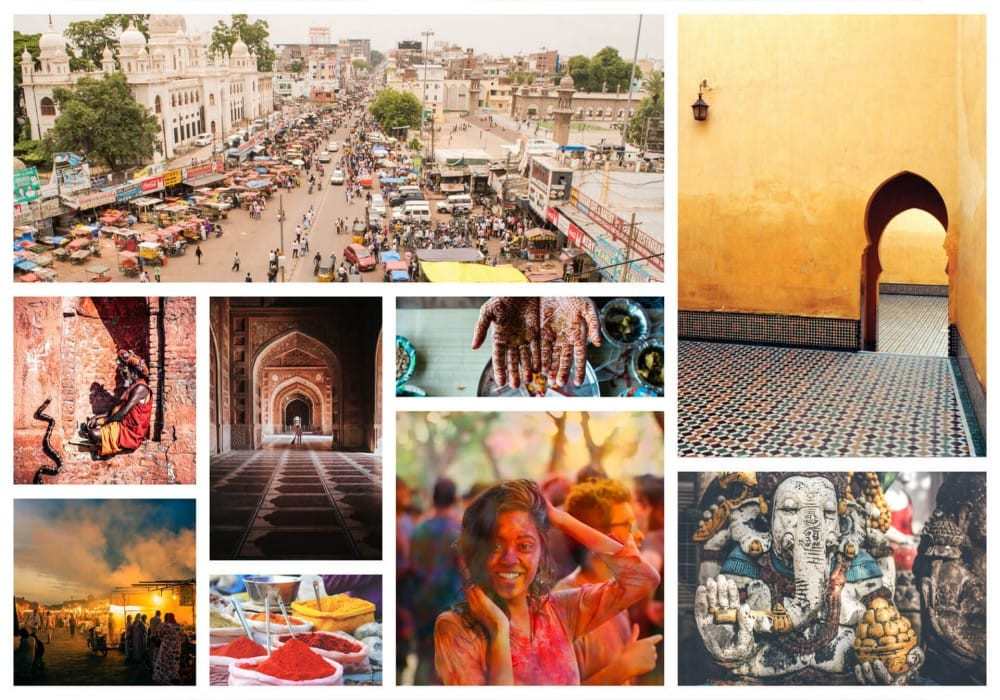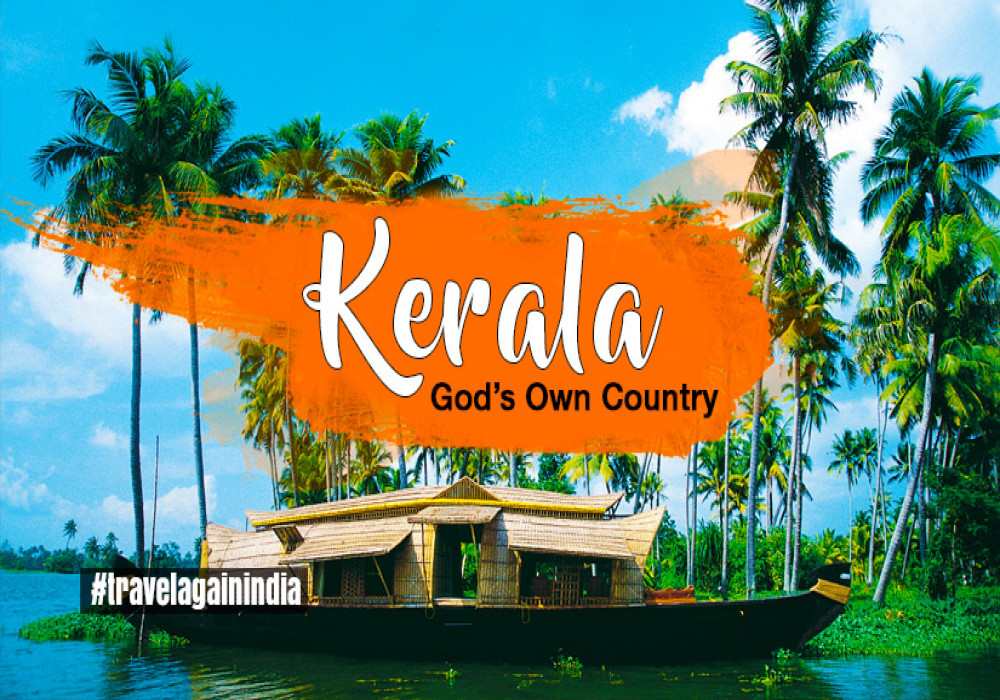
Last Updated At: 14-Feb-2024
Culture Of Spain | Traditions, Food, Dance, Music
Spain's rich cultural heritage is an intricate tapestry woven from centuries of history, diverse influences, and sincere devotion to preserving its traditions. The enchanting allure of Spanish cultural traditions has captivated the world, drawing travellers and enthusiasts alike to explore the country's captivating way of life. From the exuberant festivals that paint the streets with vibrant colours to the age-old customs passed down through generations, Spain stands as a testament to the enduring beauty of heritage.
Festivals and traditions in Spain are not merely events on the calendar; they are deeply ingrained in the fabric of society, representing the very essence of Spanish identity. With a rhythmic heartbeat that resonates through its cities and villages, Spain's cultural tapestry is interwoven with celebrations that range from the solemn to the exuberant.
Culture Of Spain | Tradition And Lifestyle
From the sun-soaked shores of Andalusia to the architectural wonders of Catalonia, the immersive experience of Spain's cultural traditions invites exploration. The streets burst to life during events like La Tomatina and Las Fallas, where communities gather to revel in the joyous chaos of shared rituals. With each festival and tradition, Spain showcases its vibrant heritage and remarkable ability to harmonise its past with the present, inviting the world to embrace its unique cultural journey.
- Cultural Diversity | Russia's Multifaceted Cultural Landscape
- Cultural Heritage | Legacy of the Ages
- Traditional Festivals | Russia's Vibrant Traditional Festivals
- Culture and Art | Art's Role in Russian Culture
- Religious practises | A Closer Look at Russian Religious Customs
- Cultural Events | Highlights of Russia's Spectacular Events
- Cuisine | Russian Culinary Odyssey
- Folk Dance and Music | Russia's Energetic Folk Dance and Music
- Traditional dresses | Threads of Time
- Exploring Russian Orthodox Architecture | Spires of Faith
1. Cultural Diversity | Russia's Multifaceted Cultural Landscape
Russia's cultural diversity is a marvel, reflecting its vast expanse and the convergence of various ethnicities, languages, and traditions. From the bustling streets of Moscow to the serene landscapes of Siberia, this multifaceted cultural landscape is a testament to the country's historical interactions, geographical differences, and the harmonious coexistence of numerous groups. The Slavic majority lays the foundation, while indigenous groups like the Tatars, Yakuts, and Bashkirs enrich the mosaic with their distinct heritage. Russia's cultural diversity fosters a sense of unity within its diversity, encapsulating a dynamic blend of identities, languages, and traditions that together form the vibrant tapestry of Russian culture.
2. Cultural Heritage | Legacy of the Ages
Russia's cultural heritage is a treasure trove that spans centuries, embodying the essence of historical significance and cultural evolution. The architectural marvels, from the iconic Kremlin to the storied city of Novgorod, stand as testaments to the nation's past. Each structure tells a tale of dynasties, political shifts, and artistic movements. Beyond architecture, Russia's legacy also extends to literature, art, music, and scientific achievements. The works of Tolstoy and Dostoevsky, the masterpieces of Russian painters, and the timeless compositions of Tchaikovsky resonate as a living legacy, shaping global culture and inspiring generations.
3. Traditional Festivals | Russia's Vibrant Traditional Festivals
Russia's traditional festivals are vibrant celebrations that provide a window into the nation's soul. Maslenitsa, the Pancake Week, is a lively pre-Lenten festival that marks the transition from winter to spring. The celebration involves feasting, dancing, and burning a straw effigy, symbolising winter's end. Victory Day commemorates World War II's end and is a nationwide event characterised by parades, concerts, and a deep sense of patriotism. The folkloric celebration of Ivan Kupala Night, with its rituals, bonfires, and flower wreaths, showcases the deep connection between Russia's cultural heritage and the rhythms of nature.
Also Read: Things To Do In Spain
4. Culture and Art | Art's Role in Russian Culture
Art plays an integral role in Russian culture, mirroring the nation's emotions, history, and collective identity. Russian art has produced remarkable painters like Ivan Shishkin, whose landscapes capture the country's diverse beauty, and Wassily Kandinsky, a pioneer of abstract art. Literature, too, stands as a cornerstone, with the works of Russian novelists delving into the human psyche and societal complexities. The realm of music boasts luminaries like Tchaikovsky and Stravinsky, whose compositions evoke emotions from triumph to introspection. Russian culture finds its voice through art, providing an avenue for self-expression and a connection to the nation's soul.
5. Religious Practices | A Closer Look at Russian Religious Customs
Russian religious practices are deeply rooted in history and spirituality. The Russian Orthodox Church holds a significant place, with its majestic cathedrals and monasteries serving as centres of worship and cultural heritage. Iconography, a revered art form, plays a role in religious devotion and artistic expression. Elaborate rituals, including midnight liturgies and symbolic meals, mark observances like Easter and Christmas. The intersection of faith and culture is visible in Russian religious practices, bridging the gap between spirituality and the nation's historical legacy.
6. Cultural Events | Highlights of Russia's Spectacular Events
Russia's cultural events are grand spectacles that unite people from all walks of life. The Bolshoi Ballet performances, renowned for their grace and precision, showcase the pinnacle of artistic expression. The Moscow International Film Festival provides a platform for cinematic creativity and cultural exchange. The White Nights Festival in St. Petersburg celebrates the city's luminous summer nights with concerts, ballets, and fireworks. These events transcend entertainment; they embody Russia's commitment to nurturing its cultural heritage and sharing it with the world.
Also Read: Famous Food Of Spain
7. Cuisine | Russian Culinary Odyssey
Russian cuisine is a culinary journey through history, geography, and the art of hearty flavours. Blini, savoury pancakes, and borscht, a vibrant beet soup, reflect the country's agricultural heritage. Pelmeni, dumplings filled with meat or vegetables, are a testament to Russia's nomadic past. The dining table became a gathering place for family and friends, emphasising the importance of community and shared meals. Russian cuisine nourishes the body and tells a tale of resourcefulness, adaptation, and the celebration of life.
8. Folk Dance and Music | Russia's Energetic Folk Dance and Music
Russia's folk dance and music are spirited expressions of joy, energy, and cultural identity. The Kalinka dance, with its fast-paced footwork and spinning, embodies the vitality of Russian celebrations. The balalaika, a traditional instrument, produces melodies that evoke the vastness of Russia's landscapes. The Cossack dance, with its acrobatics and power, reflects the warrior spirit of a resilient nation. These artistic expressions celebrate the spirit of unity, resilience, and a shared sense of belonging.
9. Traditional Dresses | Threads of Time
Traditional dresses in Russia encapsulate the passage of time and the regional diversity that shapes the nation. The "sarafan," a sleeveless dress, showcases the elegance of rural attire. The "kokoshnik," a headdress adorned with intricate embroidery and jewels, reflects the splendour of formal occasions. Traditional dresses serve as visual narratives, capturing the evolution of fashion, the influence of foreign cultures, and the cherished customs that have endured through generations.
Also Read: Places To Visit In Spain
10. Exploring Russian Orthodox Architecture | Spires of Faith
Russian Orthodox architecture manifests faith and artistry, symbolising the nation's spiritual connection and architectural prowess. The onion domes of St. Basil's Cathedral in Moscow, with their vibrant colours and intricate patterns, exude a sense of wonder. The monasteries of Suzdal and Sergiev Posad stand as serene sanctuaries, blending religious devotion with architectural beauty. Adorned with icons and frescoes, these structures are not just towers but embodiments of faith that have withstood the test of time, carrying the essence of Russian spirituality and cultural heritage.
Russian culture doesn't merely exist within museum walls or in the annals of history; it lives vibrantly in the rhythm of folk music, the aroma of hearty cuisine, and the emotional celebrations of its people. It dances across the stages of theatres, resonates within the notes of classical compositions, and echoes through the streets during lively festivals. Yet, Russia's culture is not confined to nostalgia; it's a living, breathing entity that continues to evolve. It embraces the influences of the past while embracing the winds of change, evident in its contemporary art scene, the fusion of traditional and modern elements, and the adaptability of its people. Russia calls out all adventurers and enthusiasts to delve into the Russian style of living, plan your vacation today with Adotrip, and embark on a smooth journey.
With us, nothing is far!
Book Spain Tour Packages
Frequently Asked Questions About Culture Of Spain
Q1. How important is a family in Spanish culture?
A1.Family is highly important in Spanish culture, evidenced by the following:
- Strong Family Bonds: Families maintain close relationships and often live close to one another.
- Extended Families: Grandparents, aunts, uncles, and cousins play an integral role in family life.
- Shared Meals: Regular gatherings for meals provide opportunities for family bonding.
- Support System: Families offer emotional and practical support in times of need.
- Celebrations: Special occasions are celebrated with extended family, reinforcing family ties.
Q2. How has Catholicism influenced Spanish culture?
A2. Catholicism has significantly influenced Spanish culture through the following:
- Religious Festivals: Many Spanish holidays and festivals are rooted in Catholic traditions.
- Architecture: Cathedrals, churches, and religious art showcase Catholic influence.
- Daily Life: Daily routines often include prayers and religious rituals.
- Family Values: Catholic teachings emphasise family cohesion and values.
- Art and Literature: Religious themes are prominent in Spanish art and literature.
Q3. What role does food play in daily life and special occasions?
A3. food plays a vital role in Spanish culture:
- Social Bonding: Sharing meals fosters connections among family and friends.
- Traditional Cuisine: Local ingredients and recipes reflect regional identities.
- Daily Ritual: Lunch is the main meal, and dinners are often later in the evening.
- Festive Celebrations: Special occasions are marked by elaborate feasts and traditional dishes.
- Tapas Culture: Small, shared plates encourage communal dining experiences.
Q4. How is flamenco music tied to Spanish identity?
A4. Flamenco music is deeply tied to Spanish identity:
- Cultural Expression: It embodies intense emotions and tells stories of Spanish history.
- Historical Roots: Originating in Andalusia, it reflects the region's diverse heritage.
- National Symbol: Recognised globally, it represents the passion and soul of Spain.
Q5. What dance genres like tango originated in Spain?
A5. The dance genre of flamenco originated in Spain.
Q6. How have ancient Roman and Moorish cultures impacted Spain?
A6. Ancient Roman and Moorish cultures have lasting influences on Spain's art, architecture, language, and cuisine.
Q7. What major artistic movements like surrealism emerged in Spain?
A7. One major artistic movement in Spain was Surrealism, with Salvador Dalí as a prominent figure.
Q8. How do the Spanish celebrate holidays and festivals?
A8. Spanish holidays and festivals are celebrated with vibrant parades, music, dancing, and traditional foods, often involving religious or historical themes.
Q9. What folk traditions are unique to certain regions of Spain?
A9. Unique folk traditions in different regions of Spain include:
- Basque Country: Euskal Herria's vibrant traditional dances and unique language.
- Galicia: Pilgrimages to Santiago de Compostela and traditional bagpipe music.
- Andalusia: Flamenco music and dance, associated with Seville and Granada.
- Catalonia: Human tower-building ("Castells") and vibrant Catalan festivals.
- Valencia: Las Fallas festival with massive sculptures and fireworks.
Q10. How is bullfighting an iconic part of Spanish culture?
A10. Bullfighting is iconic in Spanish culture due to the following:
- Historical Roots: Tracing back centuries, it reflects Spain's rural heritage.
- Symbolism: Seen as a dance between man and beast, embodying courage and skill.
- Artistic Expression: Choreographed movements and costumes make it a spectacle.
- Controversy: While some celebrate, it's criticised for animal cruelty and ethics.
- Cultural Significance: Represents aspects of tradition, bravery, and Spanish identity.
--- Published By Adotrip
Latest Blogs

Long Weekends In India 2025 - List of Holidays

Kazakhstan Travel Guide 2025: Affordable Luxury, Visa Free E...

Think Ayodhya is Just Temples? Discover Its Hidden Artistic...

Why Azerbaijan is the Best Budget Friendly Alternative to Sw...














 Dubai
Dubai Malaysia
Malaysia USA
USA





